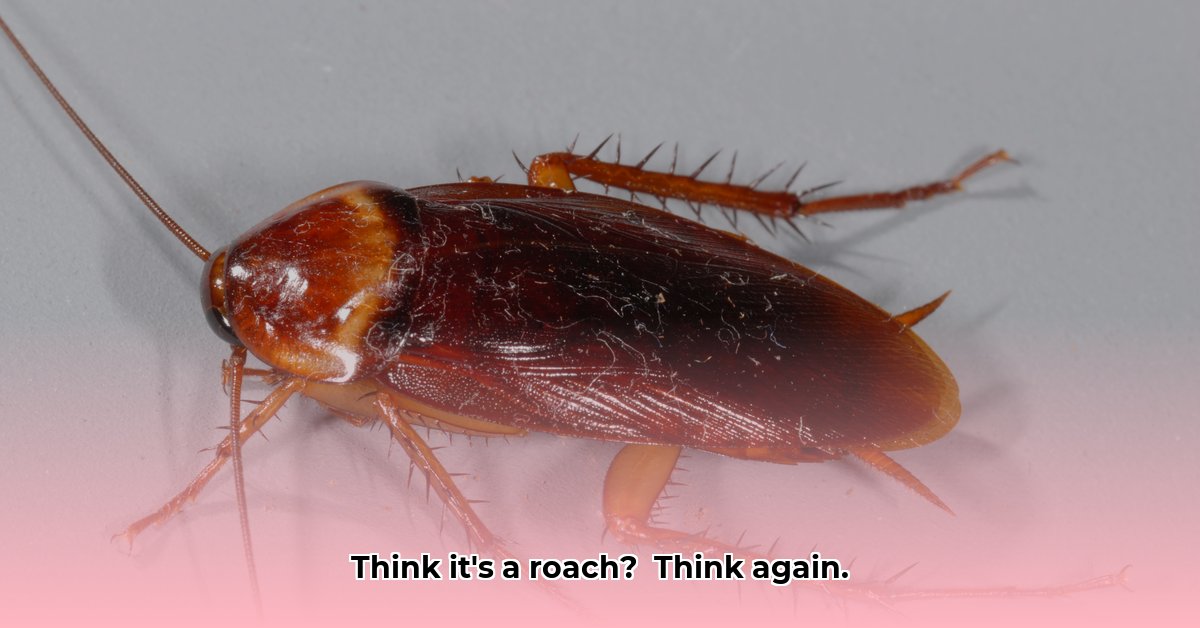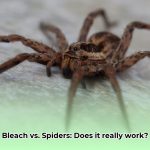Seeing a fast-moving, dark shape out of the corner of your eye can trigger instant panic—is it a cockroach? Take a deep breath. This guide will help you investigate, identify, and determine the best course of action for dealing with any “cockroach-looking” bug.
Identifying Common Cockroach Imposters
Before you reach for the insecticide, let’s explore the world of cockroach look-alikes. Many harmless insects are often mistaken for roaches, causing unnecessary anxiety.
Water Bugs: Often Misunderstood
The term “waterbug” is frequently used as slang for cockroaches, especially the American cockroach (Periplaneta americana). However, true water bugs belong to a different insect order altogether. They are aquatic insects, typically much larger than cockroaches, with oar-like hind legs adapted for swimming. Finding one inside likely suggests it’s lost and poses no threat to you or your home.
Beetles: Masters of Mimicry
The incredibly diverse beetle family includes several cockroach impersonators. Ground beetles, often dark and shiny, are beneficial garden predators, feasting on pests. Wood-boring beetles, as their name suggests, prefer wood and can become a problem if they infest furniture or structural timbers. Longhorn beetles, distinguishable by their exceptionally long antennae, can range from harmless to destructive depending on the species. The Palo Verde beetle, a type of longhorn, is a prime example of a cockroach look-alike found in the Southwest U.S. Another, the Asian longhorned beetle, is an invasive species that poses a serious threat to hardwood trees. Beetles usually have a harder, more shell-like exoskeleton compared to the relatively softer body of a cockroach.
Bed Bugs: Small but Significant
While not visually identical to adult cockroaches, tiny, immature bed bugs can be mistaken for them due to their size and brownish color. However, bed bugs have drastically different habits, feeding solely on blood. Dark spots on mattresses or itchy bites are tell-tale signs of bed bugs, not cockroaches. Correct identification is crucial, as these pests require entirely different treatment strategies.
Crickets: Chirping Clues
Crickets, with their long antennae and jumping ability, can sometimes be confused with roaches, particularly in dimly lit areas. Their chirping is usually a clear giveaway, though. They’re more of a noise nuisance than a health hazard.
A Closer Look: Distinguishing Features
| Feature | Cockroach | Common Look-Alikes |
|---|---|---|
| Antennae | Long, thread-like | Varies (short, clubbed, segmented, long) |
| Body Shape | Oval, flattened | Can be rounder, longer, or cylindrical |
| Wings | Usually present, may be reduced or absent in some species | May be absent, hardened, or cover the entire abdomen |
| Movement | Fast, darting | Varies – some fly, jump, or crawl |
| Habitat | Warm, damp, dark areas | Varies widely, from gardens to dry wood to aquatic environments |
What To Do
If It Is a Cockroach
- Sanitation: Meticulous cleaning eliminates food sources and makes your home less attractive to roaches.
- Exclusion: Sealing cracks and crevices prevents entry.
- DIY Control: Baits and traps can be effective for small infestations.
- Professional Help: For severe infestations, contact a qualified pest control professional.
If It’s Not a Cockroach
- Beneficial Insects (e.g., ground beetles): Leave them be! They contribute to a healthy ecosystem.
- Nuisance Insects (e.g., crickets): Seal entry points and consider natural repellents.
- Wood-Boring Beetles: Inspect and treat affected wood. Preventative measures, like sealing exposed wood, are crucial.
- Bed Bugs: Contact a pest control professional immediately. Bed bugs require specialized treatment.
Regional and Seasonal Variations
Insect populations fluctuate based on geographic location and season. Researching common insects in your area can aid identification and inform preventative measures. Certain cockroach look-alikes are more prevalent during specific times of the year (e.g., May/June beetles during – you guessed it – May and June!).
Frequently Asked Questions
-
Q: I saw a large, flying insect in my bathroom. Could it be a cockroach? A: While some cockroaches can fly, it could be a different insect altogether, such as a water bug, palmetto bug (which is another name commonly but mistakenly given to American cockroaches), or even a beetle. Observe the insect carefully for distinguishing features to be sure.
-
Q: What attracts cockroaches in the first place? A: Cockroaches are attracted to food, water, and shelter. Crumbs, spills, open food containers, leaky pipes, and clutter all create inviting environments for these pests.
-
Q: Are all cockroaches harmful? A: While cockroaches are not inherently aggressive, they can contaminate food and surfaces with bacteria and allergens, potentially posing health risks. Some people are also allergic to cockroach saliva, feces, and shed skin.
Conclusion
Don’t let a fleeting glimpse of a “cockroach-like” insect send you into a frenzy. By using this guide, you can confidently identify common household insects and determine the appropriate course of action. Remember, knowledge is your best tool in pest management.
- Does Ammonia Kill Mold? The Truth About Using It for Removal - April 15, 2025
- Does Bleach Kill Spiders? Effectiveness, Safety, and Better Alternatives - April 15, 2025
- Does Soap Expire? How to Tell if Your Soap Has Gone Bad - April 15, 2025










